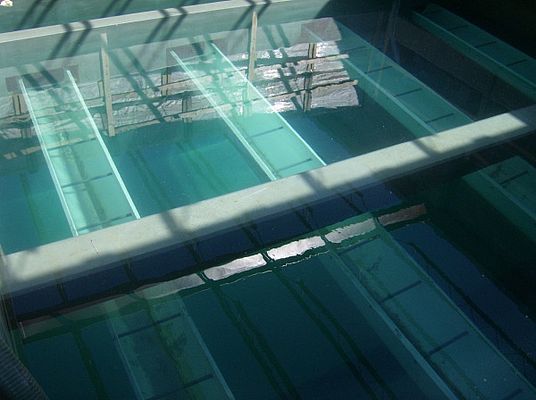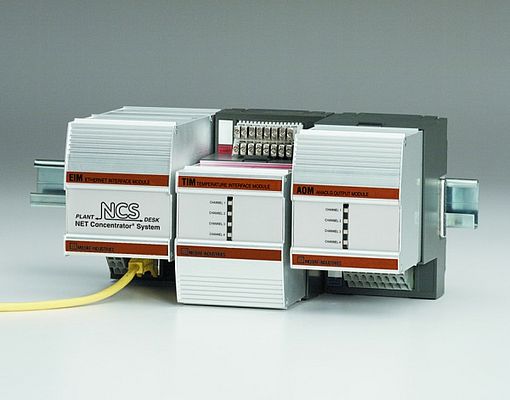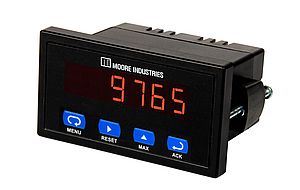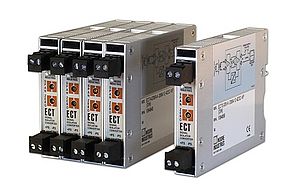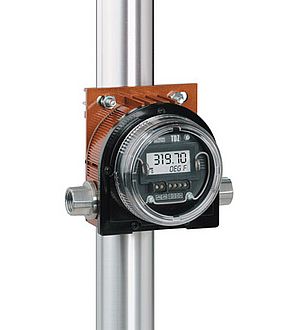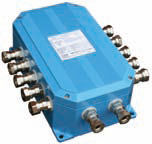In Central New York State, upgrades at a municipal water plant helped to enhance the process to meet the water quality needs. Modernizing its control system utilizing a Distributed and Remote I/O solution reduced wiring and improved operational readiness and reliability.
A treatment plant owned and operated by OCWA, which treats water from Otisco Lake, supplies approximately half of OCWA’s water. Located in the Town of Marcellus, New York, the facility has undergone infrastructure improvements designed to enhance its overall performance. OCWA recently rehabilitated four existing filter units and added two new filters to improve the plant’s water quality, increase its reliability, and comply with state and federal regulations governing municipal drinking water plants.
Operational Challenges
For plant operators, turbidity is one of the most important factors in the water treatment process. Turbidity refers to how clear/cloudy the water is. Suspended matter and microscopic organisms cause turbidity in water. Improvements in process control and monitoring assist operators in keeping turbidity levels low.
The source, treatment and distribution system for a regional water company typically covers hundreds or thousands of square miles. Water levels may need to be monitored on distant reservoirs and lakes, chemical treatments and flow rates controlled in multiple tanks and lagoons, pumps operated at pump stations, and regulatory reports generated for local and state authorities.
At the Marcellus water treatment plant, OCWA undertook an ambitious project to update its processes and technology to meet new and proposed state health department and EPA regulations. This effort involved expansion of the facility from four to six filter beds, as well as the modernization of various mechanical systems and chemical processes. The plant also upgraded its overall control and instrumentation system in order to enhance automation performance, improve reliability, provide for simple and cost-effective expansion, and reduce operating and maintenance costs.
As part of the control system modernization, OCWA decided to upgrade its legacy Bristol-Babcock 3335 Remote Terminal Units (RTUs) with Emerson’s ControlWave Programmable Automation Controllers (PACs). Plant management sought to improve the performance of control room operators by transitioning from manual analog control to a fully automated SCADA system utilizing Ethernet and Modbus network communications.
In the water purification process, controllers turn pumps off and on, open and close valves and send operating conditions—temperature, electricity, flow, level and other relevant data—to the main control room. Visibility of this information through the Human-Machine Interface (HMI) is essential since it allows operators to monitor and track all critical parameters.
In addition, OCWA wanted to reduce wiring and instrument maintenance costs at its water treatment facility. This would require the elimination of multiple long cable runs between sensors, actuators and controls, and a solution for collecting multiple sensor/control pairs near their point of installation. Such an approach would do away with hundreds of previously installed twisted pairs, cable trays, complex wiring diagrams, and associated maintenance.
New Technology
Advanced automation is a tool that can help municipal water authorities minimize the impact of critical operational and regulatory challenges. To guarantee satisfactory drinking water quality, extensive monitoring of the source and finished water of water treatment plants is performed. With surface water sources, such as Otisco Lake, the water characteristics and parameters (including turbidity) vary all the time, including seasonal fluctuations and daily changes caused by weather effects. To meet these challenges and maintain water quality, treatment processes are typically adjusted on the basis of operator knowledge and experience.
The Marcellus facility began the task of replacing outdated analog control equipment with the latest technology, and moving all process automation functions to an online SCADA system. The project called for replacing existing RTUs to provide a scalable platform suitable for a variety of small applications, as well as control strategies spanning the entire plant; and gaining the ability to leverage modern digital signal transmission.
Key to the control system upgrade was the implementation of Distributed I/O and Remote I/O—specifically a solution employing isolated I/O modules to eliminate signal loop interference on the Ethernet control network. This would stop ground loops and signal aberrations at any location from affecting other measurements in the facility. Digital communications, in place of analog signals, also eliminates sensor and control signal degradation (and associated calibrations) and cross communication (noise) commonly associated with “analog-only” communications.
Various automation equipment suppliers now offer modular I/O systems that can be used as a relatively low-cost method of bringing field devices from the plant floor into a SCADA or control system using Ethernet. These systems can communicate with each other and other computers over standard Ethernet using off-the-shelf Ethernet hubs, switches and/or routers, and viewed from a wireless laptop, web browser, spreadsheet or third-party HMI.
After considering alternative vendor offerings, OCWA’s project team decided upon the NET Concentrator System (NCS) from Moore Industries. This smart I/O system takes advantage of “cable-concentrating” technology, which eliminates point-to-point cable, conduit and wire trays by sending process monitoring and control signals between the field and control room on a single digital communication link. The system provides true signal isolation, with isolated modules for both analog and digital I/O. All discrete and analog signals are digitized, packetized and communicated via Ethernet communications using standard Ethernet cables, LAN switches and routine Ethernet hardware.
The Distributed I/O and Remote I/O System functions as a universal signal gateway that interfaces with OPC-compatible DCSs or PLCs, and works over 10/100Base-T Ethernet (Modbus/TCP) and Modbus RTU networks. The system includes a communications module plus multiple I/O modules. Each I/O module supports multiple analog or discrete channels that interface to remote sensors,
switches, actuators and displays. Each analog input channel incorporates its own 20-bit A/D input. This guarantees that no resolution from the existing analog transmitters will be lost when the signal is transmitted over the Ethernet network to the host system.
At the Marcellus water treatment plant, the Distributed I/O and Remote I/O communication module digitally communicates signals to a network concentrator in a peer-to-host network. The use of digital communication with error correction and high-speed Ethernet LAN cable assures signal integrity and minimizes signal degradation that could otherwise exist with traditional home-run analog signals.
Project Results
The new PLC, SCADA, and Distributed I/O and Remote I/O systems at the Marcellus water treatment plant have extended process automation and enabled operators to manage potential problems safely and swiftly. They have also helped to reduce hard-wiring costs and maintenance requirements. Most importantly, the new equipment has proven to be very reliable, which was one of OCWA’s criteria for technology investments.
Thanks to improved data acquisition and control capabilities, OCWA personnel are better equipped to handle issues that arise at the plant. Managers, operators and technicians can view the water treatment processes from any one of the onsite HMIs or computers. What’s more, they can monitor and control the company’s water distribution operations without ever leaving the Marcellus site.
The ability to closely monitor filter beds and other processes with real-time field data has reduced operator reaction time, and ultimately improved plant efficiency. It has also increased security and allowed for more accurate reporting of water quality.
From an engineering and maintenance perspective, the recent technology upgrades provided additional troubleshooting tools in a convenient package, which is independent from the control system. All I/O is visible though the plant’s Ethernet network—even in the event of a complete PLC shutdown.
Conclusion
OCWA can now maintain a consistent, high quality water treatment operation without unexpected downtime and costly repairs. And plant operators have gained the necessary means for real-time monitoring of plant processes to ensure the quality of water meets all applicable requirements.
Jim McConahay, P.E., Senior Field Applications Engineer, Moore Industries Geoffrey G. Miller, P.E., Executive Engineer, Onondaga County Water Authority
I/O solution upgrades water treatment plant,
reduces wiring and improves operational readiness and reliability
- by Moore Industries
- October 3, 2011
- 357 views


